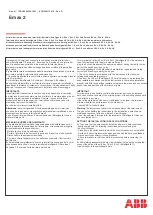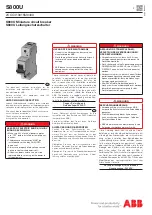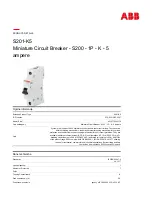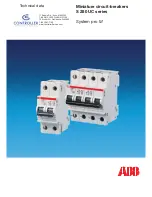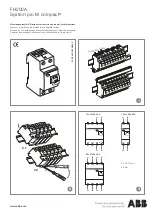
MicroVersaTrip Plus™ and MicroVersaTrip PM™ Trip Units
Chapter 2. Setup Mode
23
Figure 41. Trip Unit display for potential transformer
connection choice.
Power Demand Intervals
This function sets the power demand interval, which
can be in the range of 5 to 60 minutes, in steps of 5
minutes. This setpoint specifies the time interval for
power demand averaging. The Trip Unit calculates a
rolling average of breaker power over this time inter-
val. The Trip Unit display is illustrated in Figure 42.
Figure 42. Trip Unit display for power demand interval.
Communication Address
Note that this step applies only to MicroVersaTrip
PM Trip Units connected to either POWER
LEADER™ or Epic MicroVersaTrip systems.
With POWER LEADER systems, the address is
assigned at the breaker. The address options are
from 256 to 999, in steps of 1, as illustrated in Figure
43.
Figure 43. Trip Unit display for setting communication address.
With Epic MicroVersaTrip systems, the Field
Programming Unit (FPU) calls for removal of the
rating plug. This is not required for addressing a
MicroVersaTrip PM Trip Unit. Simply press
ENTER
to
identify the unit to the FPU.
The address shown on
the FPU’s display must not be changed at the
breaker.
Accessory Configuration Setup (RMS9D
Series Trip Units Only)
RMS9D Trip Units have a six-position DIP switch
module on the rear of the unit that controls the con-
figuration of the Power Break® II integrated accesso-
ries. These switches can be set up to define the types
of signals (protection trip, Shunt trip, Shunt Trip
with Lockout, or Undervoltage Release trip) that
activate the Bell Alarm–Alarm Only and Bell Alarm
with Lockout accessories on the Power Break II
breaker. Each of the six switches enables or disables
a different path to activate these accessories from the
different types of trip signals. Figure 44 shows the
logic function for the switches.
The Trip Unit DIP switches are illustrated in Figure
45, with the factory settings shown. Table 17 lists the
switch functions.
Figure 44. Logic diagram for accessory configurations.





































